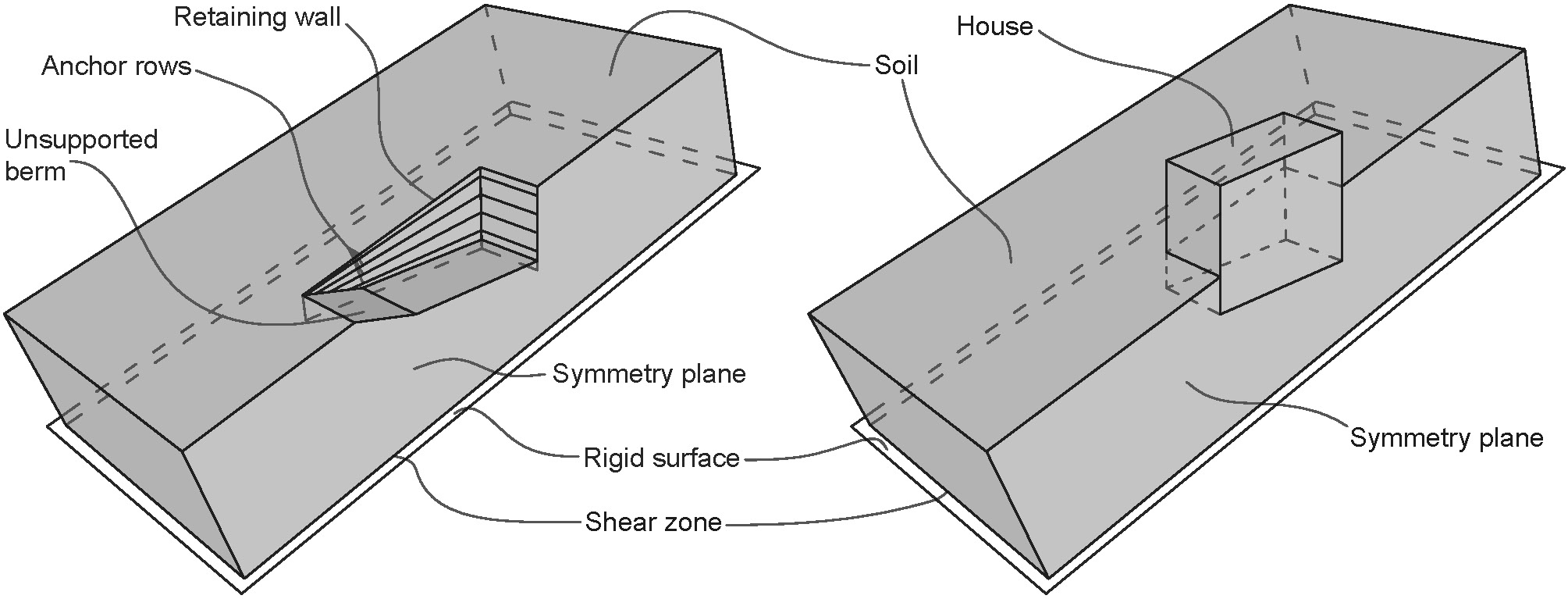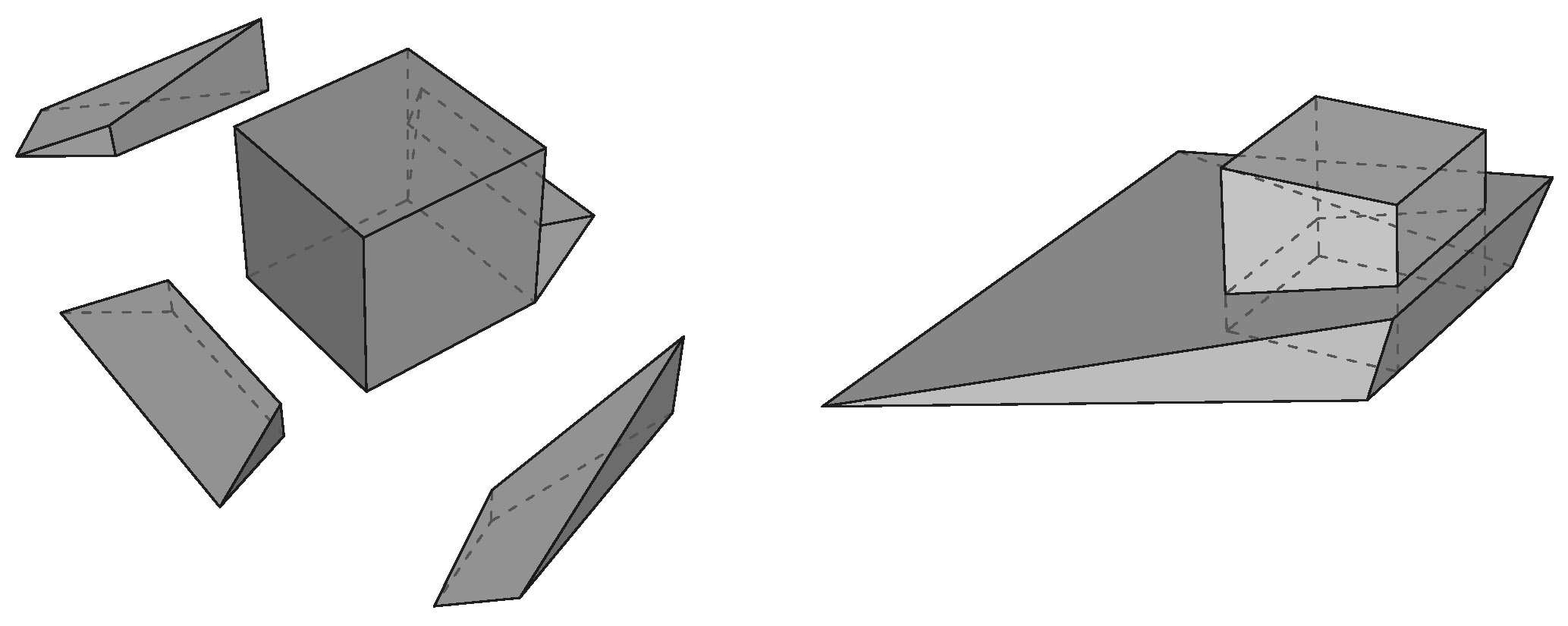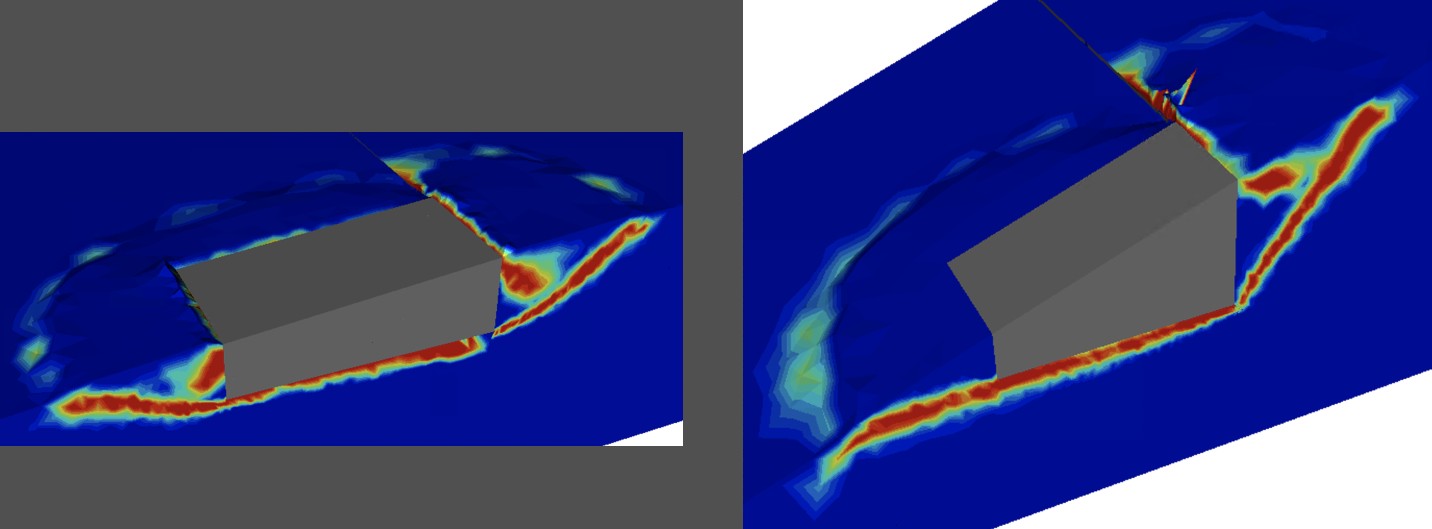Principles of Construction on Slow-Moving Landslides
2017 - 2023
Slow-moving landslides are a common phenomenon in mountainous regions. Due to their slow and often unapparent movement, urbanisation has frequently taken place in such areas. It is not surprising, that the literature presents many reports of damaged infrastructure and buildings, situated on such slides. The Brattas landslide in the Swiss alpine town of St. Moritz is one of many examples. The slide is constrained at its foot by a rock outcrop, and previous studies at our chair have shown that this part of the landslide is under very high compression. Many buildings in the town are suffering from substantial damage being attributed to these high earth pressures. In addition, during the study of the landslide, construction projects for buildings caused even more damage to neighbouring buildings, for which the controlling landslide parameter is presumably also the high earth pressure.
With these damage cases as a motivation, the objective of this research project was to investigate 1) the damage potential of excavation processes on close neighbours, as well as 2) the long-term evolution of the earth pressure acting on buildings in slow-moving landslides. To this end, a simplified and generic modelling procedure for the finite element method (FEM) was developed, which incorporates only a limited part of the sliding body of a landslide, while still ensuring proper landslide behaviour. The key to this was imposing an adequate, analytically derived initial state for the soil, the shear zone and the boundaries of the modelled landslide partition. The model then readily allowed for an incorporation of an excavation process or a building experiencing landslide compression. Figure 1 shows an example for both types of models.

1) Excavations in landslides: The damage potential of excavation processes on neighbouring buildings was investigated in a comprehensive parametric study, using an established method. This method involves only the greenfield deformations around the excavation pit, which correlate to the damage of fictitious buildings, when applying the limiting tensile strain method. The study successfully allowed for determining the most influential parameters of the problem and formulating criteria for good anchor design in order to avoid damage. The following journal article was published with the findings: Hettelingh and Puzrin, 2023 “Construction on Slow-Moving Landslides: Effects of Excavation on Neighboring Structures” (https://doi.org/10.1061/JGGEFK.GTENG-11318).
2) Earth pressure on buildings in landslides: In order to determine the maximum earth pressure possible to act on a building embedded in the compression zone of a slow-moving landslide, limit analysis was employed. It was recognised that for this specific problem, limit analysis is incapable of providing rigorous upper bounds on the true maximum earth pressure, because the deformation field in the sliding soil around the kinematic mechanism is unknown. However, such solutions may still be good approximations. Therefore, two families of 3D kinematic mechanisms of limit analysis were developed analytically, and the results were complemented with finite element limit analysis (FELA) calculations for a comparison. Figure 2 shows the two families of 3D mechanisms, while Figure 3 indicates the mechanism geometries resulting from FELA.


To assess the quality of approximation of these solutions and results, as well as to investigate the most significant parameters, FEM calculations were carried out in an extensive parametric study, using the above-mentioned model. The results showed that for certain cases, extremely high earth pressures can be reached, exceeding the known limits of the landslide on its own. Furthermore, all of the three applied methods have their advantages and disadvantages, depending on the specific case and the available resources. A research article with the findings has been submitted to a journal and is currently under review: Hettelingh and Puzrin “Maximum Earth Pressure on Buildings in Landslides”.
Funding
Part of this research project was funded by the Federal Office for the Environment (FOEN) of Switzerland.
Researcher
Dr. Roman Hettelingh
Publications
Contact
Head of Institute for Geotechnical Engineering
Institut für Geotechnik
Stefano-Franscini-Platz 5
8093
Zürich
Switzerland
